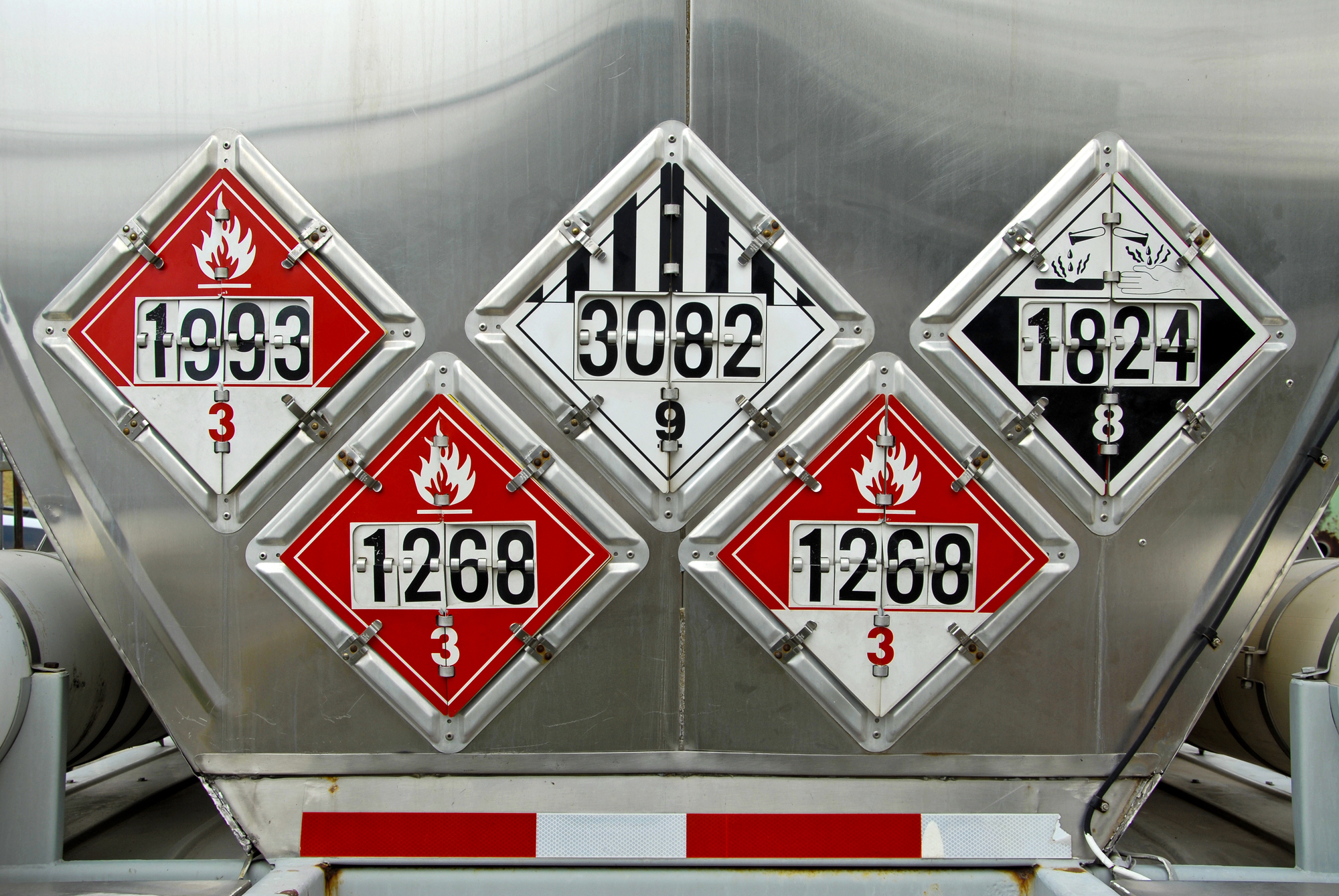Hazmat violations don’t just put you and others in danger. They can also lead to expensive fines. Learn about the most common hazmat violations, according to the Federal Motor Carrier Safety Administration.
177.834A — Package Not Secure in Vehicle
This might come as a surprise, but failure to secure the package is the leading hazmat violation, making up 9.03 percent of all violations as of June 2020. This often occurs because truck drivers are in a rush. You can avoid this problem by taking special care to secure your package before hitting the road.
177.817E — Shipping Paper Accessibility
Shipping paper accessibility was the second most cited violation. You can easily avoid this by having the shipping paper nearby at all times, so you can quickly provide it to authorities.
107.620B — No Copy of U.S. DOT Hazardous Materials Registration Number
Before you operate a truck to haul hazardous materials, make sure the registration number is onboard. If it isn’t, you could end up with a violation. Since this is the third most cited violation, take special care, so you don’t end up a statistic.
172.504A — Vehicle Not Placarded as Required
You also need to make sure that the placards are displayed on the end and both sides of the vehicle. Otherwise, you could end up one of the many who gets cited for this issue.
172.516C6 — Placard Damaged, Deteriorated, or Obscured
Some drivers have their placards displayed, but they are damaged or not legible. Make sure your placards are in good shape and legible, so you don’t face this problem. If you notice any issues with your placards, talk to your employer.
177.817A — No or Improper Shipping Papers (Carrier)
The driver has to receive shipping papers before transporting hazardous materials. If the shipping papers aren’t present or there are mistakes, you could end up with a violation.
177.823A — No Placards/Markings When Required
Some vehicles have improper placards or fail to have enough. Other trucks don’t have placards or markings at all. While you would not think this would happen often, it makes up 4.68 percent of all violations. Fortunately, it’s easy to avoid this problem.
172.502A1 — Prohibited Placarding
Your truck cannot contain any placarding that could be confused with the placards required by the Hazardous Materials Regulations. If your truck has placards that look too similar to HMR placards, take them off your truck before driving, or you could end up receiving a violation.
172.602C1 — Maintenance/Accessibility of Emergency Response Information
You need to have the emergency response information readily available in case of an accident. Hazmat inspectors can also ask for it, and if you don’t have it nearby, you’ll receive a violation. While this might seem like a pain, this rule is in place to keep everyone safe in case there is an accident.
172.600C — Offer of Transport Without Emergency Response Information
You should never transport hazardous materials without having emergency response information. Doing so is more than dangerous. It’s also against the law, and you will receive a violation. If you don’t have emergency response information, your truck should not hit the road.
Here at Liquid Trucking, we know that staying in compliance isn’t always easy. You’re busy, so you might want to let something slip. That can cost you time and money in the long run, though. You don’t want to end up with expensive violations or stuck at the side of the road. Stay on top of the hazmat violations and make sure you are in full compliance. Then, you won’t have to worry when you undergo an inspection. You’ll know you’re in compliance, and you’ll be back on the road quickly.
